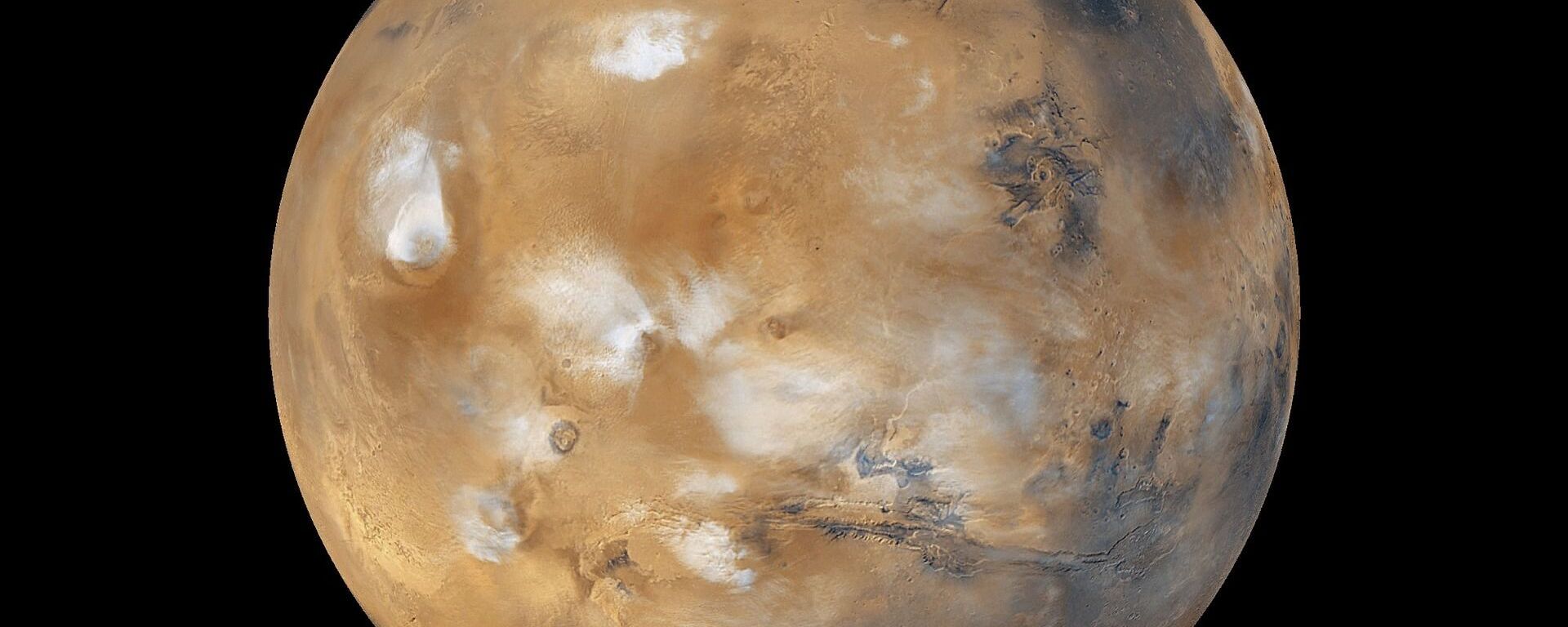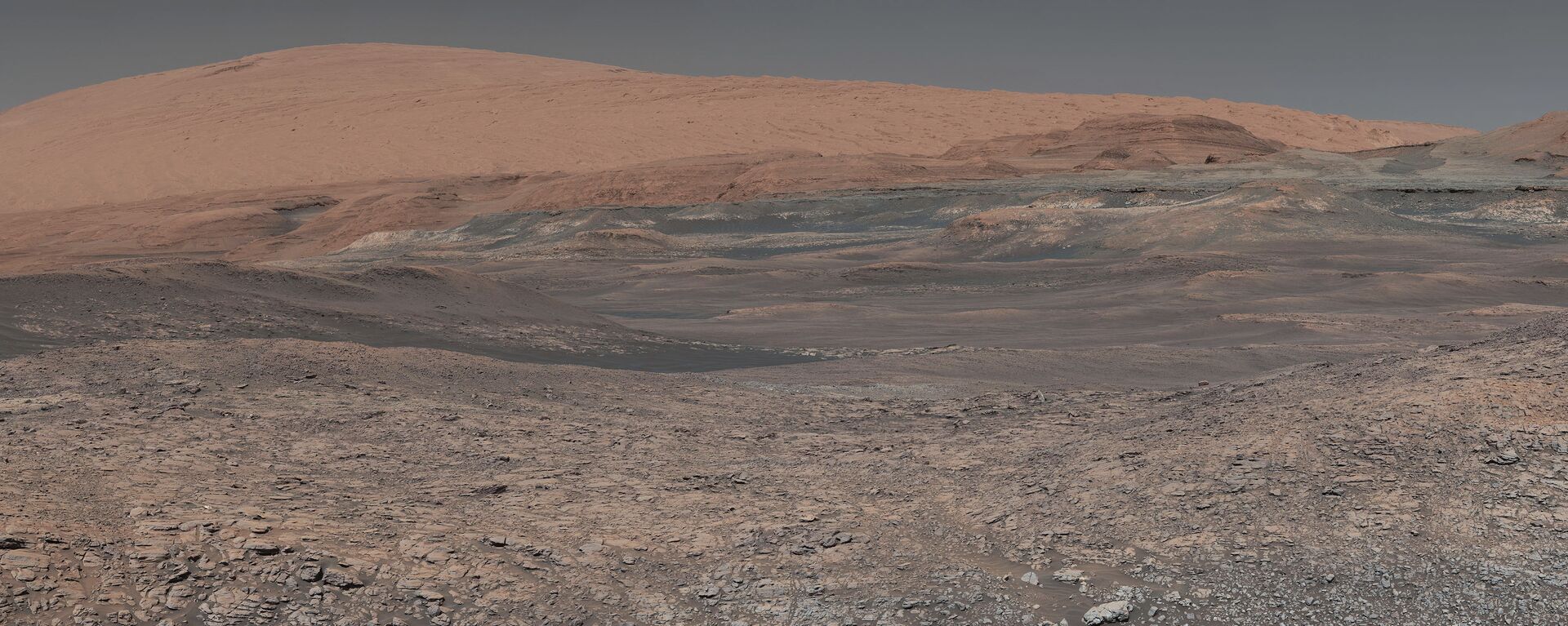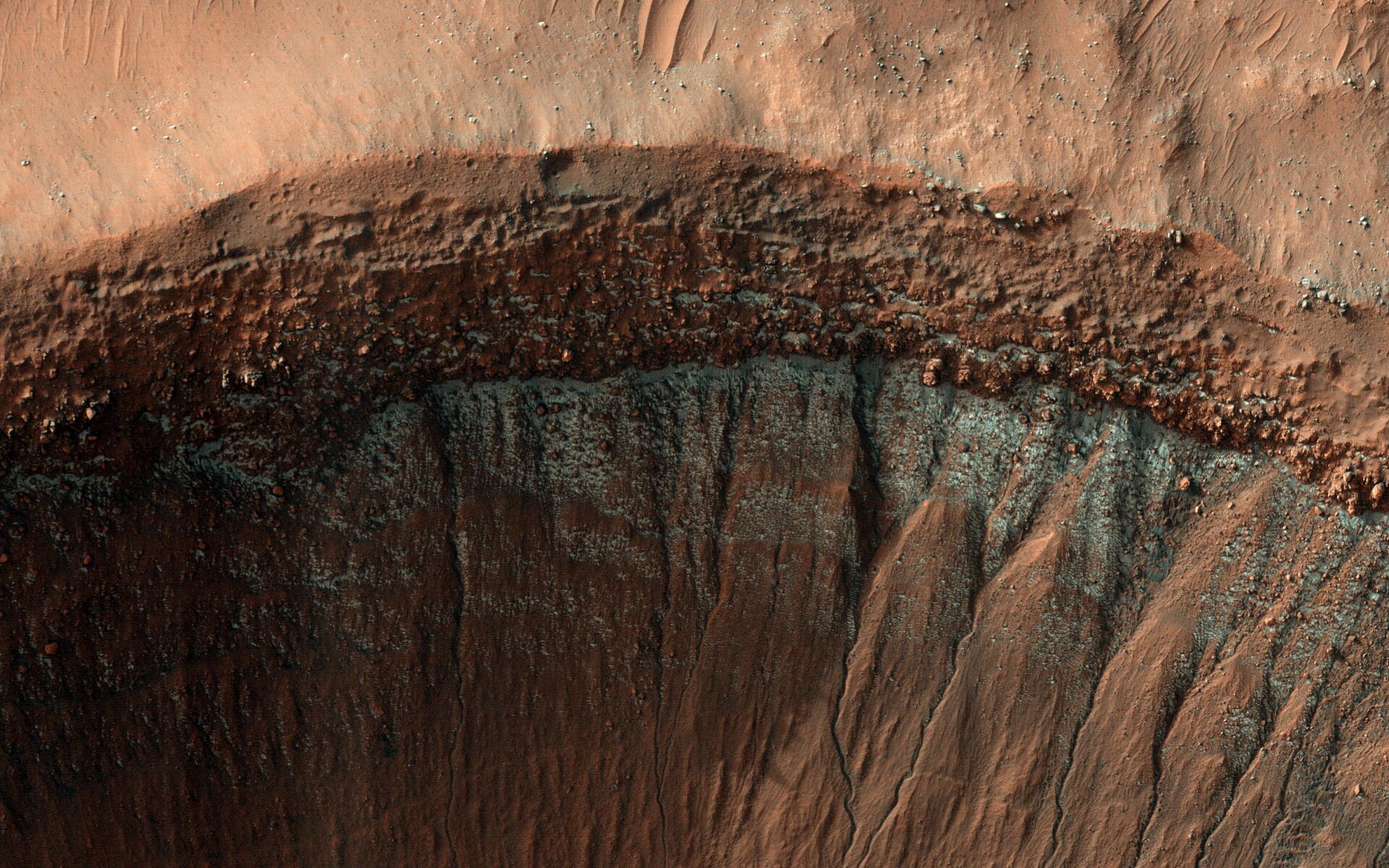https://sputnikglobe.com/20221206/not-so-dead-after-all-mars-may-be-more-active-than-believed-study-shows-1105093087.html
Not So Dead After All? Mars May Be More Active Than Believed, Study Shows
Not So Dead After All? Mars May Be More Active Than Believed, Study Shows
Sputnik International
Planet Mars may be more active than believed, study shows.
2022-12-06T11:19+0000
2022-12-06T11:19+0000
2022-12-06T11:19+0000
science & tech
mars
magma
mantle plume
university of arizona
https://cdn1.img.sputnikglobe.com/img/103877/62/1038776256_0:0:1280:720_1920x0_80_0_0_7fbd77e82993cb0e3112dace0e3d7bac.jpg
Mars is still pulsing with volcanism and tectonics, a stunning testimony that the so-called “dead” Red planet may be more active than previously believed, a new study has revealed.The discovery of an active plume in the Martian mantle concealed under a plain called the Elysium Planitia led the team from the University of Arizona to believe that previous theories about Mars may have been erroneous.Dead or Not?Mars, which once boasted an atmosphere, water in the form of rivers and lakes, and volcanic activity, died when over time the core cooled to a degree when its magnetic generator “shut down.” That is what left it bare to the onslaught of “solar wind” which started to erode its atmosphere. The planet, which was under bombardment of radiation, lost its atmosphere and its water, turning into a cold desert.However, there have been some indications that the planet might not be completely dead, as scientists discovered that the Tissint meteorite that fell to Earth in Morocco in 2011 contained evidence of mantle convection dated half a billion years ago. More recently, the Mars InSight lander revealed indications of seismic activity. As previous research by the same group of scientists pointed to an unusually strong gravity field emanating from the Elysium Planitia, Adrien Broquet, a postdoctoral research associate at the University of Arizona Lunar and Planetary Laboratory (LPL) and study co-author, Jeffrey Andrews-Hanna, an associate professor of planetary science at the LPL, proceeded to collect topographical, gravity, geological, and seismic data for further studies. They finally applied a tectonic model to the area in question. That is when they discovered that the 4,000-kilometer wide convection plume in the Martian mantle was pushing molten magma up to the surface of the planet, triggering earthquakes and volcanic activity. Such continuing plume activity is proof that Mars - seismically and volcanically still active - possesses a "geodynamically active interior," the scientists stated.Jeffrey Andrews-Hanna added that evidence for active mantle plumes, such as those registered on Earth and Venus, is not something one would have expected on the small and supposedly cold Mars.
https://sputnikglobe.com/20221030/likely-signs-of-magmatic-processes-more-recent-volcanic-activity-discovered-on-mars-1102848142.html
https://sputnikglobe.com/20221202/signs-of-megatsunami-generated-by-asteroid-impact-detected-on-mars-1104955106.html
mars
Sputnik International
feedback@sputniknews.com
+74956456601
MIA „Rossiya Segodnya“
2022
News
en_EN
Sputnik International
feedback@sputniknews.com
+74956456601
MIA „Rossiya Segodnya“
Sputnik International
feedback@sputniknews.com
+74956456601
MIA „Rossiya Segodnya“
discovery on mars, magma, mars pulsing with volcanism and tectonics, active plume in martian mantle
discovery on mars, magma, mars pulsing with volcanism and tectonics, active plume in martian mantle
Not So Dead After All? Mars May Be More Active Than Believed, Study Shows
Mars, where traces of long-gone rivers and lakes are still visible, has been generally considered geologically dead since around three billion years ago, as the core that sustained the red planet's magnetic field cooled.
Mars is still pulsing with volcanism and tectonics, a stunning testimony that the so-called “dead”
Red planet may be more active than previously believed,
a new study has revealed.
The discovery of an active plume in the Martian mantle concealed under a plain called the Elysium Planitia led the team from the University of Arizona to believe that previous theories about Mars may have been erroneous.
Mars, which once boasted an atmosphere, water in the form of rivers and lakes, and volcanic activity, died when over time the core cooled to a degree when its magnetic generator “shut down.” That is what left it bare to the onslaught of
“solar wind” which started to erode its atmosphere. The planet, which was under bombardment of radiation, lost its atmosphere and its water, turning into
a cold desert.However, there have been some indications that the planet might not be completely dead, as scientists discovered that the Tissint meteorite that fell to Earth in Morocco in 2011 contained evidence of mantle convection dated half a billion years ago. More recently, the
Mars InSight lander revealed indications of seismic activity.

30 October 2022, 15:05 GMT
As previous research by the same group of scientists pointed to an unusually strong gravity field emanating from the Elysium Planitia, Adrien Broquet, a postdoctoral research associate at the University of Arizona Lunar and Planetary Laboratory (LPL) and study co-author, Jeffrey Andrews-Hanna, an associate professor of planetary science at the LPL, proceeded to collect topographical, gravity, geological, and seismic data for further studies. They finally applied a tectonic model to the area in question. That is when they discovered that the 4,000-kilometer wide convection plume in the Martian
mantle was pushing molten magma up to the surface of the planet, triggering earthquakes and volcanic activity.
Such continuing plume activity is proof that Mars - seismically and volcanically still active - possesses a "geodynamically active interior," the scientists stated.
"Mars was most active 3 to 4 billion years ago, and the prevailing view is that the planet is essentially dead today... What little activity has occurred in recent history is typically attributed to passive processes on a cooling planet," one of the authors of the research, Adrien Broquet, a postdoctoral research associate at the UArizona Lunar and Planetary Laboratory, said.
Jeffrey Andrews-Hanna added that evidence for active mantle plumes, such as those registered on Earth and Venus, is not something one would have expected on the small and supposedly cold Mars.

2 December 2022, 06:50 GMT




